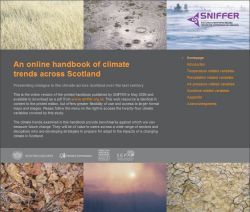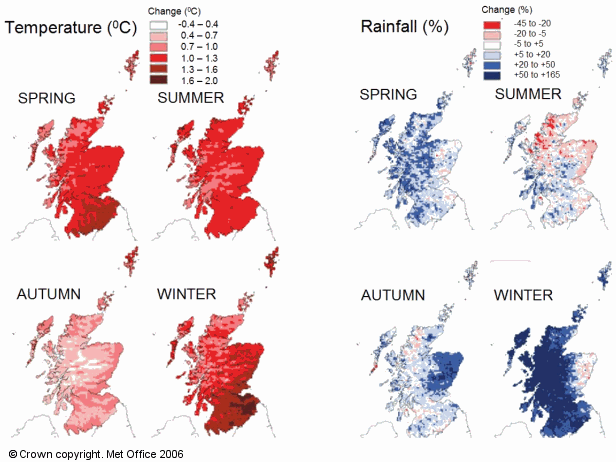Summary
Summary
- Warmer growing season – mean temperatures have increased in all regions of Scotland and in all seasons
- Longer growing season – growing season length has increased in all regions of Scotland
- Milder winters – number of days of ground frost has decreased in all areas of Scotland
- Drier summers in south and east Scotland
- Wetter autumns and winters generally
- No change in mean wind speed – but more extreme high winds.
For a detailed discussion of the changes in Scotland’s climate between 1961 and 2004 see:
 A handbook of climate trends across Scotland.
A handbook of climate trends across Scotland.
By C. Barnett, J. Hossell, M. Perry, C. Procter, and G. Hughes.
Sniffer Project CC03, Scotland and Northern Ireland Forum for Environmental Research.
Measured changes in temperature and rainfall between 1961-2004

Regional variations in seasonal mean temperatures have occurred in the last 40 years. Between 1961 and 2004 winters have become milder by as much as 2 °C in parts of south-east Scotland. Springs and summers are generally about 1 °C warmer across Scotland now than in the early 1960s.
Regional changes have occurred in the total annual rainfall between western and eastern Scotland. Between 1961 and 2004, Scotland experienced a 20% increase in precipitation, due to a large increase (50%) in the total winter precipitation, particularly in northern and western Scotland. Eastern Scotland has experienced a smaller 30% increase in winter precipitation.
